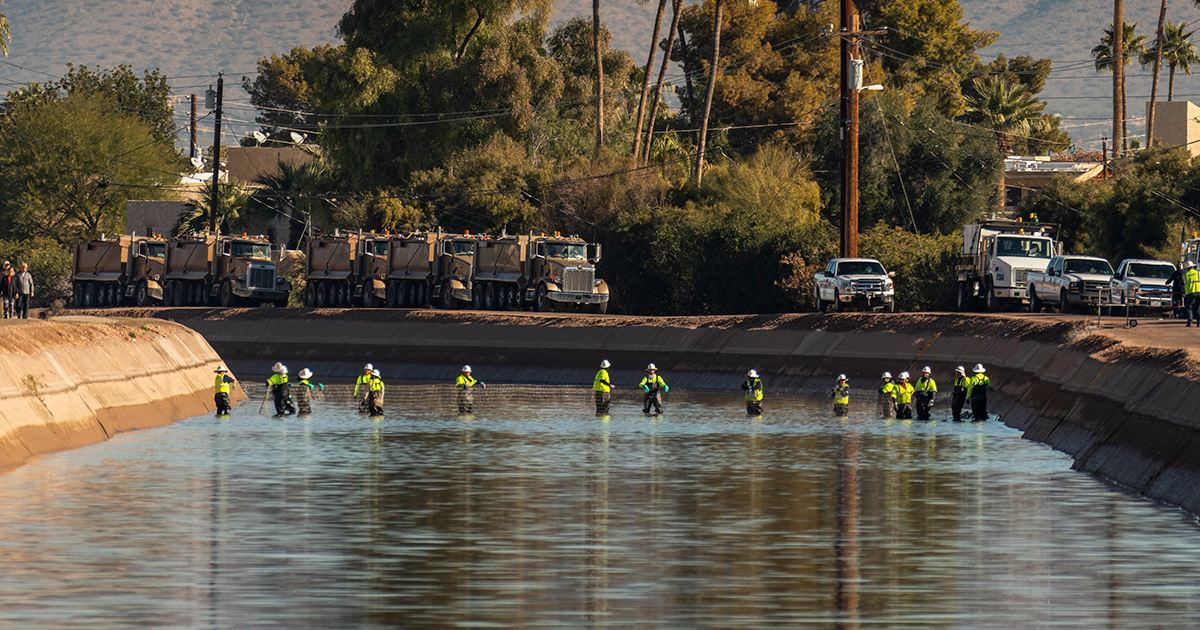
Fishing in SRP-managed canals
The fish in our canals help control weeds and keep our water running smoothly. Some are even illegal to take. Before you cast a line, see what you need to know to enjoy canal fishing safely and responsibly.
On this page:
Arizona fishing permits
While fishing is allowed along the canals, a valid fishing license is required by the state of Arizona. According to Arizona Game and Fish , "all resident and non-resident anglers 10 and older require a valid permit in any publicly accessible waters." And yes, that includes ours. Apply for a permit online today .
Help protect the SRP White Amur Program. Report the removal of white amur from the canals by calling (800) 352-0700. It is illegal to remove these fish.
Please note that urban fishing licenses are not valid permits for fishing in SRP canals.
The white amur is off limits: Be aware that it is illegal to take white amur, as they are especially helpful to our waterways (read on to find out why).
Fishing etiquette: To help our canals remain safe for all visitors, make sure to clean up all hooks, bait and lines so that runners and cyclists don't trip or get tangled up.
Why do I need to release white amur?
The white amur is a crucial part of managing weeds in SRP’s 131-mile canal system through the White Amur Fish Program.
The fish eat weeds and algae that clog and slow the flow of water in our canals. In fact, they consume up to three-quarters of their body weight daily, providing an environmentally-sound way to clear the canals.
The White Amur Program
In 1989, SRP launched the White Amur Fish Program to help keep the canals clean and clear without using chemicals or machinery.
The white amur, a type of carp native to China, was selected for its ability to control moss and weeds at a wider range of temperatures than most other fish.
The White Amur Fish Program stocks thousands of white amur fish in our canals, saving SRP hundreds of thousands of dollars in annual operating costs while promoting innovative and environmentally friendly water management practices.
Stocking our canals
The first delivery in 1989 consisted of about 1,800 fish placed in the canal. Today, about 44,000 fish keep Arizona’s canals healthy.
- Special stocking permits from the Arizona Game and Fish Department require the white amur to be certified as sterile before it can be imported.
- Grates are in place to keep the fish in the canal.
- To keep stock up, SRP replenishes the fish population by trucking in several thousand white amur per year.
Maintenance, care and protection
Because of its significant weed-eating value, the white amur receives special treatment. Each winter when SRP drains portions of its canals for maintenance, the white amur are carefully herded and relocated to "wet" canal areas.
Carp vs. white amur: How to tell them apart
If you’re fishing in our waterways, you’ll most likely catch carp and white amur. All white amur must be released if caught.
Per Arizona fishing regulations, all white amur must be immediately released back into the water unharmed.
The common carp have long, spiny fins along their backs and little whiskers called "barbels" near their mouths.
White amur have similar coloring to carp on their backs but feature several notable differences, including a white underbelly, lack of barbels on their mouths and no bony spines in their dorsal fin.




